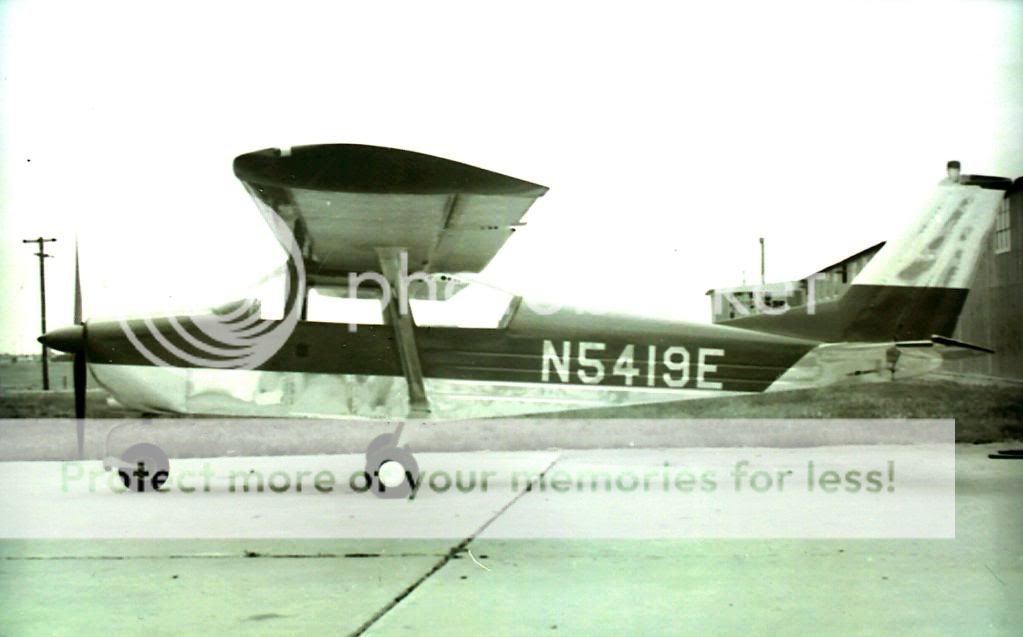Jos Heyman
ACCESS: Top Secret
- Joined
- 15 February 2007
- Messages
- 597
- Reaction score
- 80
walter said:Anyone ever seen a photo of a Model 330? ???
This twin is described as derived from the Model 340 (Model 411?), but smaller/lighter and intended to fit between the Models 310/320 and 340.
First flight given as 30 November 1966 and engines as two Continental TSIO-520.
Registration N3764C
walter said:Anyone ever seen a photo of a Model 330? ???
Tailspin Turtle said:M-306, 1950 Cessna proposal against OS-117. Grumman won with the G-89 that became the S2F.
famvburg said:N3764C is a Thorp T-18.
Maveric said:Hi Tailspin,
do you have some data?
Thanks
walter said:Stargazer2006 advised c/n 659 for the 330. Does anyone have knowledge of the Cesssna c/n system with experimental/prototype aircraft. I saw c/n 687 (303), c/n 635 (first 320), c/n 672-673 (2 prototypes 340), so maybe Cessna used a separate series?



Sentinel Chicken said:Link to original story: http://www.wingsoverkansas.com/features/article.asp?id=461
The Cessnas that got away
By DARYL MURPHY ©2005
Model 160-Cessna was selling most of the single-engine aircraft produced in the world in 1962. With models ranging from the $7,495 two-place 150B trainer to the $23,975 Model 210B, the company had eight models filling the niches. What it needed now, the reasoning went, was a design that would offer more airplane for less money, and the answer could possibly lie in changing labor-intensive production procedures. The four-place Model 160 was to be priced at $8,450, between the 150 and the 172. Its unfashionably square-cut conventionality was more a concession to the economies of manufacturing than to aesthetics of its market.
Fuselage and wing skins relied on heavy beading for strength and low weight, and the strut-braced constant-chord wings and free-caster nose gear provided simplicity of manufacture. The prototype was powered by a 125 hp Franklin engine, and it took the airplane to 134 mph. The 145 hp O-300 Continental engine then in use in the 172 was specified for the production Model 160, and would provide a top speed of 143 mph. In a proposed military version--the 160M--a Continental IO-360 of 210 hp would push it to a theoretical 174 mph top speed.
Flight tests in 1962-63 showed the model had promise, but not enough to make the necessary production and tooling adjustments, so the project was eventually abandoned and the company went back to doing things the way they had always been done. The sole prototype hung around until 1974, when it was reportedly scrapped.
However, the salvage yard kept putting off the job, and a mechanic from Northeast Kansas bought the remains of the prototype a few years ago and has offered it for sale.

hesham said:I have this old picture from Internet to unknown helicopter
from Cessna,does anyone know it ?.
Basil said:This is the only western civil coaxial propeller aircraft (besides Reno racers) I have seen so far. Did the powerplant consist of two Allison 250 turbines each driving one propeller?
This was strictly a concept test bed.
The photo is of the final flight where the tip tanks were removed to test the effects on speed. With only the wing aux tanks (30 gal each?) it was practically in a fuel emergency at takeoff.
I don't have any numbers, but I believe that performance was not quite as good as expected.
Props and prop control system were highly non-standard and a bit awkward. It was said that this project paid the McCauley engineering budget for a year. The drive path for the front and rear propeller were independent and isolated from each other except for the necessary intershaft bearing or in the case of major structural failure. Gearbox was from a small specialty shop with minimal testing beforehand (it was spun, but not under power or prop load.
